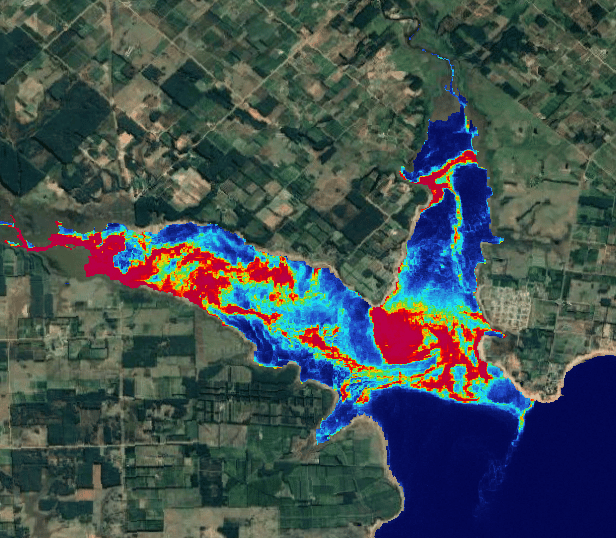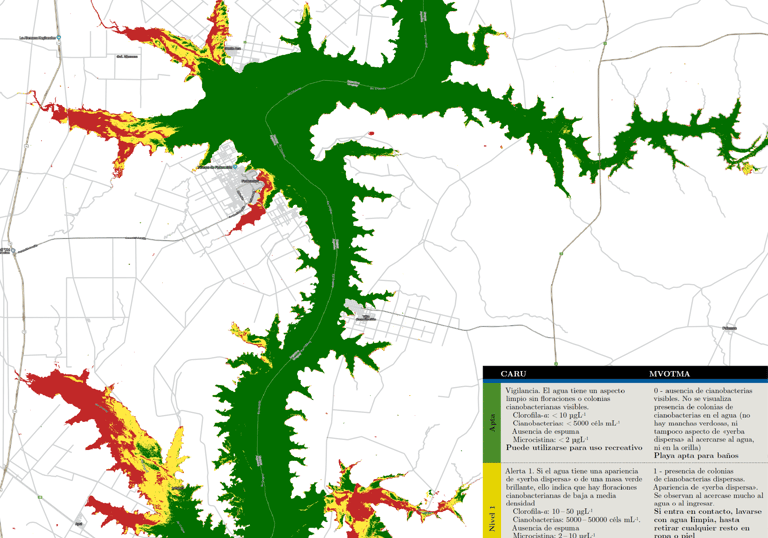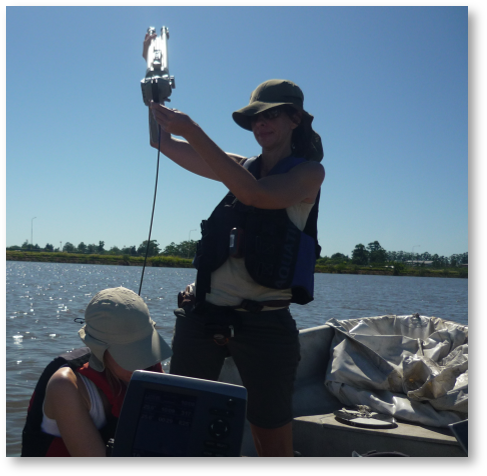Our services
From consulting and strategy development to implementation and support, our comprehensive services can assist your water management plan.
Satellite Monitoring of Water Trophic Quality
Based on various satellite platforms, we monitor variables such as chlorophyll "a," identification of cyanobacteria, abundance of cyanobacteria, presence of aquatic plants, water turbidity, and water temperature over time. This facilitates a quick review of the evolution of the water body in various sectors over time, allowing for the evaluation of the effectiveness of the implemented actions at a reduced cost.


Early warnings of cyanobacteria
We have developed an alert monitoring system for the detection of cyanobacteria through visualization platforms as well as event reports. This allows for a quick overview of the appearance and development of harmful algal blooms as well as cyanobacteria. These alert systems, together with data monitored in situ, are capable of generating suitable information when developing comprehensive management plans for the water body.


Design of monitoring programs
We design monitoring and alarm systems by integrating various approaches and technologies, assessing objectives, costs, and needs, and delivering feasible and effective proposals.
We assess the expenses associated with the contribution of remote monitoring technologies, laboratory assessments, and citizen involvement records, based on multiple objectives. We assess the viability of disseminating this information and provide decision-making frameworks informed by the findings.


Field assessment
Field studies concerning the trophic condition of aquatic environments. Measuring physicochemical parameters, including dissolved oxygen, turbidity, BOD, COD, nutrients, and toxins, is essential for characterizing the functioning of the aquatic ecosystem. Furthermore, biological indicators, including the diversity and abundance of phytoplankton species and bacteriological indicators, are utilized to evaluate the ecological condition of the water body and its associated health hazards.


